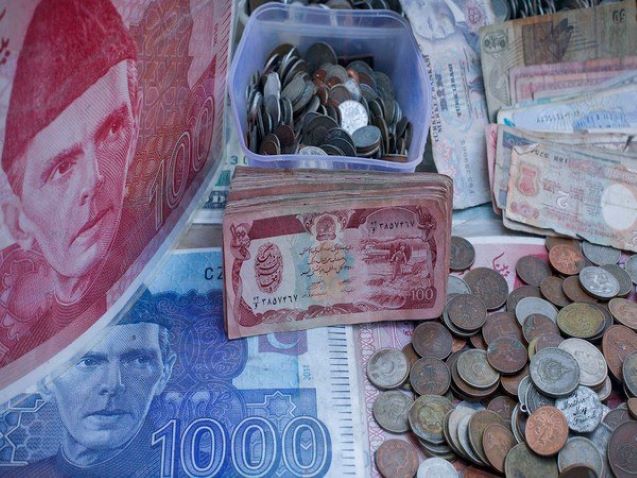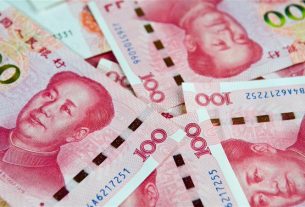It is estimated that losses caused by the severe floods in Pakistan have accumulated to US$ 18 billion. This natural disaster has aggravated Pakistan’s macro-economic fundamentals despite resumption of the IMF Programme. Over and above these challenges, Pakistan faces a severe dollar liquidity crunch. One of the consequences of the floods and other economic disasters faced by Pakistan is that the demand for imports has gone up manifold but the country does not have enough dollars. In totality the exchange rate has gone under immense pressure whereby the rupee nosedived 9 per cent against the US dollar. The worst performance of the agriculture sector will put pressure on increased demand for commodities imports and if Pakistan fails to generate desired levels of dollar inflows it might create food shortages in the current fiscal year.
Thus, without improving dollar infusions, Pakistan’s macro-economic vulnerabilities are not going anywhere. Pakistan’s agriculture sector faces the worst blow as agricultural growth might remain zero or slide into negative against the envisaged target of 3.9 per cent for the current financial year 2022-2023. Further, estimates are that Pakistan will have to import additional cotton worth US$2 billion during the current fiscal year because it witnessed severe damages in the wake of flash floods affecting areas of Sindh where cotton production was destroyed completely. The flash floods in Pakistan mean that the government will have to de-water the areas where sowing of wheat is done, otherwise there is a potential threat of less production in the range of 3 to 5 million tonnes. Minor crops of onion and tomato were also damaged in Khyber Pakhtunkhwa and Sindh. The demand for the import of pulses might also go up for the current fiscal year. Another problem that is likely to emerge on the trade front is that the country’s exports also rely upon imports on accounts of raw material and inter-mediatory goods as value addition was done for exporting finished products. Thus, the vicious cycle of several factors could lead to a collapse of Pakistan’s economy in the short-term, just like in Sri Lanka!
Amidst the severe liquidity crunch comes news that Pakistan has promised to make payments of Pak Rs50 billion to four China Pakistan Economic Corridor (CPEC) power plants to save them from default. The decision was recently taken at a meeting chaired by Finance Minister Miftah Ismail and attended by Pakistani and Chinese stakeholders. The meeting discussed the outstanding payments to the Chinese IPPs in Pakistan and other hurdles faced by them. According to official figures, the government of Pakistan owes approximately Pak Rs269 billion to 12 Chinese power plants. Dawn newspaper also reported that the government has set a schedule for regular monthly payments for a full fiscal year to the satisfaction of Chinese investors. Chinese companies were given assurance that the issue of revolving accounts, pending for years will be resolved soon. Significantly, it was decided that the Power Division would pay Pak Rs50 billion in local currency instead of US dollar, given the dollar liquidity crunch. Power producers will buy US currency from the market and stagger their overseas payments aimed at putting minimum pressure on the Pakistani rupee. The government may conclude the Pak Rs50 billion transactions early.
Amongst other power projects, Pakistan still owes Pak Rs74 billion to the Sahiwal power plant, owned by Huaneng Shandong Ruyi group despite making nearly 90 per cent payments against the billed amount. Similarly, the Shahbaz Sharif government will have to make a total payment of Pak Rs70 billion to Port Qasim power plant and another Pak Rs32 billion to Engro Powergen plant. The outstanding amount in favour of Hub power plant stands at Pak Rs65 billion. The payment of Pak Rs50 billion to the four plants will partially address their financial woes, as Pakistan has not yet been able to fulfill its promise of opening a bank account for saving the Chinese power plants from circular debt. The financial condition of the Chinese power plants is said to have deteriorated significantly due to delay in clearance of their dues, largely on account of idle capacity payments and partially on account of power purchase cost.
The IMF programme under the US$6.5 billion was restored in late August 2022 after it was stalled in February 2022, under PTI-led regime when it provided unfunded fuel and electricity subsidies. The IMF had asked Pakistan to negotiate with Chinese producers and seek a reduction in the return on equity and extend the debt repayment period from the current ten years before clearing their dues. As a result, Pakistan has already given a written assurance to the IMF that it will “strive to reduce capacity payments, as we pay the arrears, either by renegotiating the Power Purchase Agreements or by lengthening the duration of bank loans”. Pakistan also told the IMF that reimbursing high fuel prices resulted in Pakistan falling behind in payment of capacity charges owed to the Chinese power producers.
In the larger global context, Chinese investments under the Belt and Road Initiative (BRI) is causing alarm, as China’s debt diplomacy only reaps profits to Chinese companies while countries are pushed towards an economic crisis. Nine years ago, China chose Pakistan’s Gwadar as the launch pad and presented it as Beijing’s commercial window onto the Indian Ocean, a hub for regional integration under the BRI but still many projects have either failed to get off the ground or produced mixed to poor results. First announced in a speech by Chinese President Xi Jinping in 2013 as the “Silk Road,” the BRI was fleshed out in April 2015 with the announcement of the CPEC, stretching from Gwadar to the Chinese city of Kashgar, in Xinjiang. The CPEC showcased the China-Pakistan “all-weather friendship” with US$ 46 billion in pledged funds that have since grown to US$ 50 billion. Despite all this hype about the CPEC, Pakistan faces multiple economic challenges today, which have further pushed back progress on CPEC.__Financial Post





